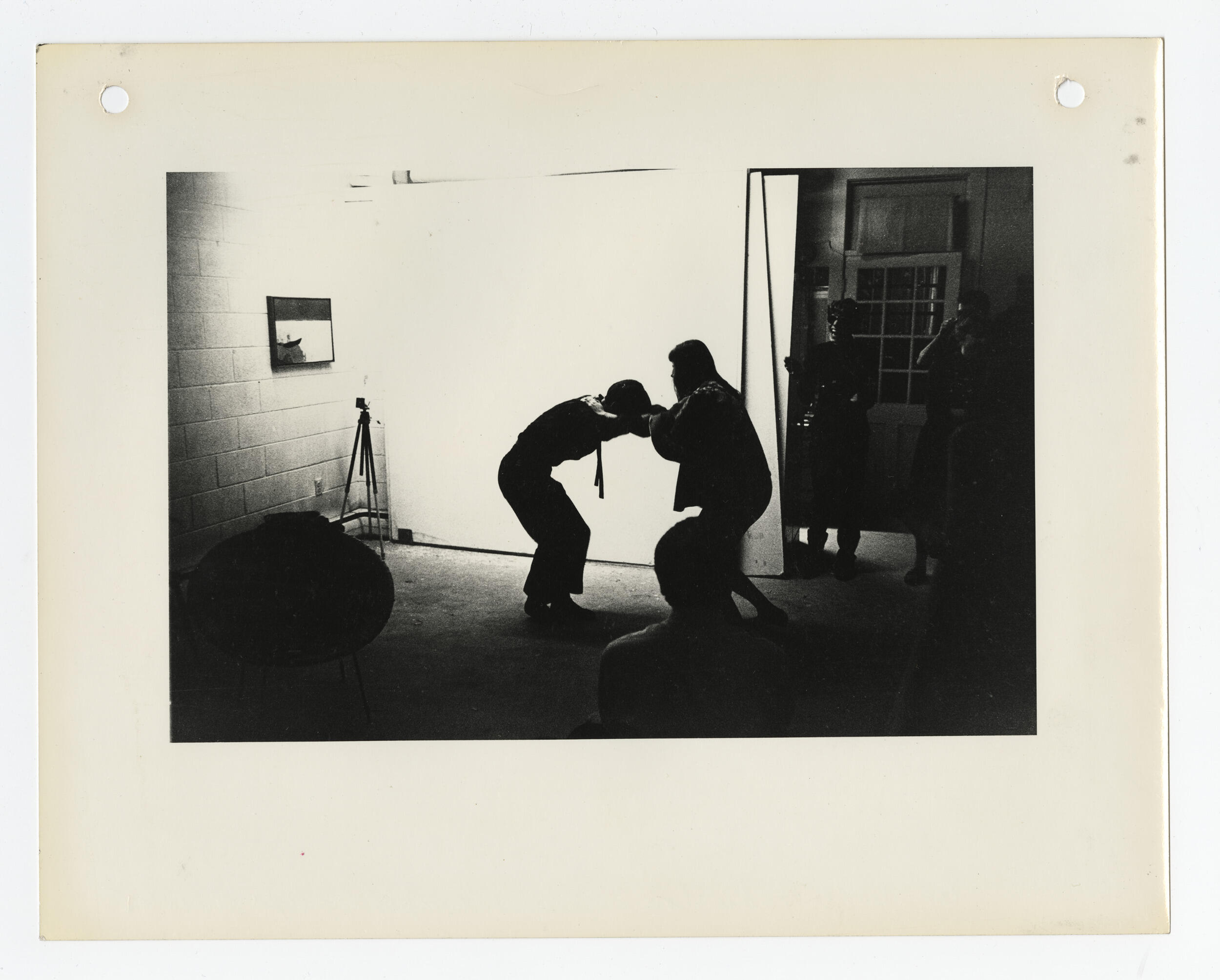New online exhibit offers an inside look at the influential – though short-lived – Bang Arts Festival
September 5, 2024.jpg)
In March 1964, Richmond Professional Institute’s weekly student newspaper, Proscript, announced a new “rip-snortin’ Springs Arts Festival out thar in the near future.” The next month, the Bang Arts Festival debuted at Virginia Commonwealth University’s predecessor institution, bringing significant artists and art professionals to Richmond for a weeklong celebration of the arts.
Though the festival was ultimately short-lived – it was held just four times between 1964 and 1967 before losing funding – it made a lasting impact.

A new online exhibit from VCU Libraries explores the circumstances surrounding the event, also known as the Bang, Bang, Bang, Etc. Arts Festival or the Spring Arts Festival.
During its four-year run, the festival helped set the stage “for the thriving art scene that has developed in the city in the half century since,” said Irina Rogova, digital initiatives librarian who curated the new exhibit. “Artists from New York City and other major hubs for modern art took notice of the faculty and students at RPI, and VCUarts faculty and staff continue to hold a prominent place on the national stage.”
According to artist David Freed, a School of the Arts professor emeritus and founder of VCU’s printmaking department, the festival was such a hit that it helped convince him to accept a position at RPI.
“I wanted to be where things were happening,” said Freed, who joined the faculty in 1966. “There was a lot of talk about the Bang Festival from the faculty, especially Bernard Martin, and it sounded great. … I knew a good place when I saw one.”
Materials from the Richard Carlyon papers, the RPI student newspaper Proscript and the yearbook Cobblestone – all housed in Special Collections and Archives at James Branch Cabell Library – were digitized for the new exhibit, which presents the materials chronologically to narrate the festival’s lifespan.
Over the years, the Bang Arts Festival featured plays, concerts, art exhibitions, performances, panels, film festivals and more. In addition to the visiting artists, RPI students and faculty played a large role in the festival’s programming.
In 1965, one student performance, titled “Synthesis I,” explored the “cruelty, horror and uselessness of war,” as described in the April 16, 1965, edition of Proscript, through sound effects, cinema-photography, pantomime and “instruments of war” from an Army surplus store. In 1966, students performed “Synthesis II” with sculpture, drama, choreography, music, noise, sound, architecture, projections and film.
Over the years, the festival hosted a who’s who of the world of contemporary arts, including:
- John Cage, pioneering composer.
- Bill Dixon, one of the seminal figures in free jazz.
- Judith Dunn, a modern dancer and choreographer who was one of the founders of the Judson Dance Theater.
- Dan Flavin, minimalist artist known for his work with fluorescent light.
- Jill Johnston, author and cultural critic who wrote for The Village Voice.
- Donald Judd, minimalist artist and founder of the Chinati Foundation.
- Roy Lichtenstein, who, along with Andy Warhol and Jasper Johns, founded American Pop Art.
- Twyla Tharp, who choreographed ballet to jazz and pop music.
In addition to photographs and visual advertising, the exhibit materials include a significant amount of correspondence between contemporary artists of the 1960s and RPI faculty, as well as planning items such as stage plans and technical schedules, and items that give insight into ordinary life in the past.
“My absolute favorite item in the collection is a letter from the manager of the Richmond airport, Anthony Dowd, to Herbert Burgert, the dean of arts,” Rogova said. “In it, Dowd refers to the RPI art students as being ‘bizarre and outlandish in appearance,’ giving him ‘ulcers on top of ulcers’ … [though he] goes on to say that the students were ‘without a doubt, one of the nicest, if not the nicest group we have ever had at the [airport].’”

The festival was created by faculty in the communication arts and design department, including James Bumgardner and Jonathan Bowie, who were co-directors, along with Carlyon, Jewett Campbell and Willard Pilchard. Martin, a member of the fine arts department faculty, and students William Livingston and Carol Sutton also participated.
In May 1967, funding for the festival was cut by the Student Activities Committee after weeks of discussion, with one RPI faculty member saying it seemed to him as though “the essence of the whole thing was sheer nonsense,” as reported in Proscript.
Though the festival may not have been a hit across the board, there was enough support to prompt RPI students to organize their own arts festival following the end of Bang’s four-year run, allowing the colorful spirit of the event to live on.
By Sian Wilkerson. This article first appeared in VCU News.
< Previous Next > Chat
Chat